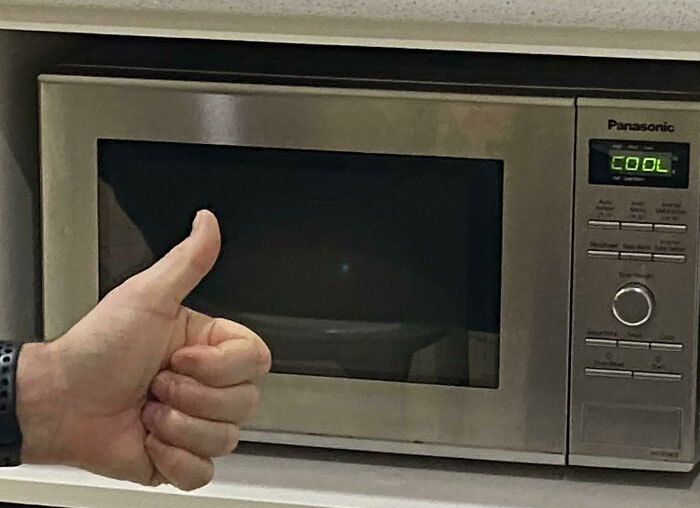600 lbs ~ 272 kg
11 miles ~ 18km
Good bot
Or approximately 2400 cheeseburgers for the Americans in the audience.
That’s almost a years worth!
Some things to keep in mind about the theater experience.
- Only a handful of theaters do film IMAX anymore. A lot of IMAX locations are just 4k DCP (Digital Cinema Package)
- Most theaters in the world are digital projectors with a max resolution of 1998x1080 or 2048x858
Part of the reason these factors still exist is cost. A poorly maintained film projector with a lousy film print can ruin a movie going experience. Hollywood would sometimes release so very shitty prints. The digital projectors are much easier to maintain so the experience is often more ideal for the average movie goer.
Having said that, if a theater takes good care of their film projectors and they have a well made and well kept print, the experience can be amazing.
deleted by creator
Here is an alternative Piped link(s): https://piped.video/watch?v=xa1xJIgLzFk
Piped is a privacy-respecting open-source alternative frontend to YouTube.
I’m open-source, check me out at GitHub.
That will fit nicely in my 32gb micro sdxc the size of a fingernail.
Actually it won’t. A movie on a 4k blu ray is around 80gb without additional compression. And Oppenheimer is shot on 70mm which is more like 8k resolution. Still would fit on a micro SD of course
It’s way bigger than that. Usually cinemas receive movies in multiple terabyte hard drives. Thats because they are using JPEG2000 standard (it varies, but it is close to lossless) and a movie can take up anywhere from 500GB to 2TB (highly dependent on resolution, it can go above 2TB).
 https://en.wikipedia.org/wiki/JPEG_2000?wprov=sfla1
https://en.wikipedia.org/wiki/JPEG_2000?wprov=sfla1
I didn’t realize imax was still film. I figured it went digital with everything else.
Digital still can’t match 70mm IMAX. In fact, IMAX film is even higher resolution than regular 70mm as the film runs through horizontally rather than vertically so more space is used for the image.
But a lot of it has moved digital. IMAX has special laser projectors. They just are not as good. Also, there is a lot of LieMAX (smaller theaters given IMAX branding) that are pretty well all digital.
There’s only a handful of IMAX theatres in the world that can play this format. Most of them are digital.
70mm film to be exact
Our local one did, but I guess not all. It’s a shame, you used to be able to watch the film being wound through windows
You can still do it through Linux, if you know the right commands…
If I pay to see a movie in an IMAX theater, this is the film being loaded? Is this normal for IMAX?
No. This is called “15/70 Imax”. There are very very few theaters that have this. The “Imax” you’ll find at the local mall is totally different.
This obsession with the length and weight of the film is such a bizarre marketing strategy.
Yeah, we all know girth is what matters.
I’m sure I’m wrong, but it’s hard to imagine this being better quality than what we can do digitally these days.
You are in fact wrong lol. Actual film has a resolution equivalent of something like 18K.
Wasn’t normal 35mm film about the equivalent of somewhere between 4k and 8k depending on the film stock?
Plus, the projector optics will always limit the sharpness of the picture. No lense is ideal, and even ideal lenses would have fundamental limitations due to diffraction.
Something like that.
As far as lens optics, we’re really splitting hairs here. 70mm through a quality lens in an imax theater is going to look absolutely fantastic and stunning. Digital is just more convenient and at some point it will catch up and surpass film.
My point was more like that even IMAX film doesn’t quite get to 18k equivalent, more like 12 to 16k. Honestly, anything above 4k (for normal widescreen content) even on big screens is barely noticeable if noticeable at all. THX recommends that the screen should cover 40° of your FOV; IMAX is what, 70°, so 8k for it is already good enough. Extra resolution is not useful if human eye can’t tell the difference; it just gets to the meaningless bragging rights territory like 192 kHz audio and DAC-s with 140 dB+ S/N ratio. Contrast, black levels, shadow details, color accuracy are IMO more important than raw resolution at which modern 8k cameras are good enough and 16k digital cameras will be more than plenty.
Resolution and color reproduction is still unmatched. Plus there are a lot of things happening in the analog domain that our eyes notice as beautiful.
Same thing is true for analog vs digital music production btw
I can’t speak for video, but for audio production that isn’t true. Audio signals can be perfectly reproduced, up to some frequency determined by the sample rate and up to some noise floor determined by the bit depth, digitally. Set that frequency well beyond that of human hearings and set that noise floor beyond what tape can do or what other factors determine, and you get perfect reproduction.
See here. https://youtu.be/UqiBJbREUgU
I assumed even an IMAX film would be digital now.
Imax film is some of the highest resolution formats we have it’s like 16k resolution, and using that for a projector gets ya some really good quality.
Quality so good they can come back to it 20 years from now when blu-ray is an outdated format to make a higher-quality home release, like what’s been done with VHS to DVD or DVD to BD
Kinda already is















